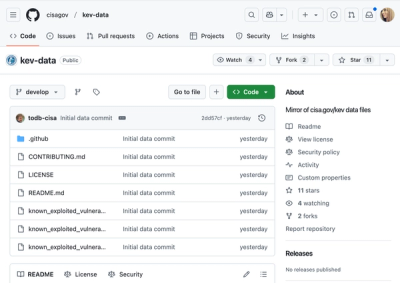
Security News
PyPI’s New Archival Feature Closes a Major Security Gap
PyPI now allows maintainers to archive projects, improving security and helping users make informed decisions about their dependencies.
pushgeek-web-push-services
Advanced tools
PushGeek is a Push Notification Engine, Application is Written in Node.js and have Restful API features.

Rollout server is simple drip marketing automation tool which help to enggage more and more users with the website, which have features like
Installing Nodejs , NPM and NVM
sudo curl -o- https://raw.githubusercontent.com/nvm-sh/nvm/v0.34.0/install.sh | bash
~/.nvm/nvm.sh
nvm install node
Cross Check Installed Versions
node -v
npm -v
nvm --version
Clone Source Code
git clone https://github.com/saurabharch/rollout
npm install
##OR
yarn install
./node_modules/.bin/web-push generate-vapid-keys
node server.js
npm install -g pm2
Run as root user in Linux
sudo pm2 start --name server-name index.js -- --name server-name --port 5500 --watch
sudo pm2 start --name server-name index.js
sudo pm2 startup
sudo pm2 save
✋🏻 PREQUESTS
sudo apt-get install nginx
sudo add-apt-repository ppa:certbot/certbot
sudo apt-get update
sudo apt install python-certbot-nginx
Generate SSL Certificate using certbot command
sudo certbot --nginx -d pushgeek.com -d www.pushgeek.com
Alternate Command
sudo certbot certonly --standalone -d pushgeek.com www.pushgeek.com
Auto Renewal Certficate with certbot
sudo certbot --dry-run
ALLOW PORTS FOR NGINX AND SETUP FIREWALL
sudo ufw default deny incoming
sudo ufw default allow outgoing
sudo ufw allow ssh
sudo ufw allow 'Nginx Full'
sudo ufw delete allow 'Nginx HTTP'
sudo ufw enable
sudo ufw allow http
sudo ufw allow https
sudo ufw status
sudo ufw status
sudo ufw allow 443/tcp (should required)systemctl status nginx
sudo vim /etc/nginx/sites-available/rollout
sudo ln -s sites-available/rollout sites-enable/rollout
sudo nginx -t
sudo service nginx restart
sudo /etc/init.d/nginx reload
sudo journalctl -xe
sudo systemctl status nginx
installing fail2ban protecting DDoS
sudo apt-get install fail2ban
File Structure
|
|
|________________________./congif
| |
| |____keys_prod.js
| |
| |____keys_dev.js
| |
| |____keys.js
|
|
|________________________./public
| |
| |____index.html
| |
| |____sw.js
| |
| |____app.js
|
|
|________________________./model
| |
| |____subscribers_model.js
|
|
|
|________________________./router
| |
| |____push.js
| |
| |____subscribe.js
| |____keygen.js
|
|___________________________server.js
DO NOT do this for a real project of this size, this is to learn. A Microservice architecture is for BIG projects with a lot of people.
People will tell you that you can do it at small scale and it is true but you can also remove ants with a nuclear bomb.
Docker containers can be used without using Microservices, they are not the same thing!
This is the most common way I see people build container based projects but my personal favourite is using a queue for all container to container communication.
Docker containers = good for almost all project sizes Microservices = good for big companies with a lot of code and people Sweetspot = Monolith app and databases in containers
FAQs
PushGeek is a Push Notification Engine, Application is Written in Node.js and have Restful API features.
The npm package pushgeek-web-push-services receives a total of 37 weekly downloads. As such, pushgeek-web-push-services popularity was classified as not popular.
We found that pushgeek-web-push-services demonstrated a not healthy version release cadence and project activity because the last version was released a year ago. It has 1 open source maintainer collaborating on the project.
Did you know?

Socket for GitHub automatically highlights issues in each pull request and monitors the health of all your open source dependencies. Discover the contents of your packages and block harmful activity before you install or update your dependencies.

Security News
PyPI now allows maintainers to archive projects, improving security and helping users make informed decisions about their dependencies.

Research
Security News
Malicious npm package postcss-optimizer delivers BeaverTail malware, targeting developer systems; similarities to past campaigns suggest a North Korean connection.

Security News
CISA's KEV data is now on GitHub, offering easier access, API integration, commit history tracking, and automated updates for security teams and researchers.